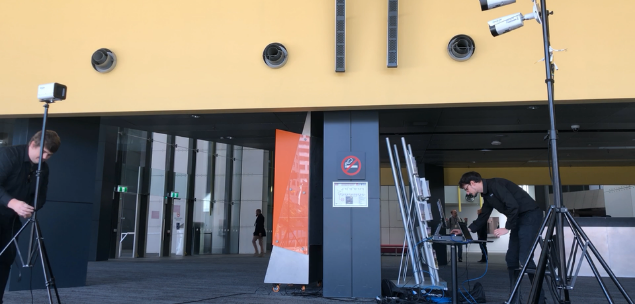While it has caused disruption and loss in many business sectors, the COVID-19 pandemic has brought the conferences and events market to its knees.
Hundreds of planned events have been cancelled or postponed indefinitely as organisers come to terms with what ongoing restrictions mean for their futures. It’s clear that taking a business-as-usual approach is simply not an option.
The impact of this mass of cancellations has been felt throughout the conference sector. Everyone from equipment hire and staging firms to caterers and security companies have suddenly seen their forward bookings disappear.
Amid the current doom and gloom, many operators are turning their thoughts to what shape the future might take. Once virus-related restrictions are eased and travel is again possible, they want plans to be in place that will get things moving once more.
A hybrid future
One trend capturing increasing attention is a shift to what has been dubbed ‘hybrid conferences’. These events have a mix of delegates who attend in person and others who join in online.
A hybrid conference offers some significant benefits. Having fewer people in a venue allows social distancing to be more easily maintained. The need to travel is also reduced, giving those who may have been prevented from attending the chance to take part.
The strategy has been boosted by the fact that far more people are now comfortable with engaging in video conferencing. Having been forced to work from home for months and communicate via a service such as Skype or Zoom, the concept of using the technology to attend a conference is easy to grasp.
Redesigned facilities
Conference and event organisers will also have to take steps to rethink the way venues are set up for those delegates who do attend in person. One-way flows of people through exhibition halls is likely to become standard, as is allowing larger spaces between booths.
Additional attention will also have to be given to taking temperature checks of attendees. While manual processes work well for small groups of people, a different approach is required when larger numbers need to enter a venue in a relatively short space of time.
One option is to deploy sophisticated thermal imaging cameras that can measure people’s temperatures as they walk past. Sometimes seen in airports, this technology is likely to become standard for all large venues.
The way in which conference translation services are provided will also change. Rather than requiring translators to travel to an event and work from a booth at the back of the room, they will provide their services remotely.
This approach reduces the need for travel while at the same time ensures critical translation services are provided where they are needed.
The rise of the robot delegate
Another way in which technology can be put to use in the conference and event space is through the introduction of robots. Equipped with a camera and microphone, they can be remotely operated by a delegate who can experience a virtual version of the event.
The robots can move around a conference floor or through an exhibition. The operating delegate can see what is being displayed and interact with staff and other delegates. The incorporation of a monitor on the robot also allows for those at the conference to see the delegate as they converse.
It’s clear that the conferencing and events industry will take a long time to recover from the current pandemic. When activity does increase, things are going to be very different.
Taking the time now to understand the options available and how they can be integrated into future events will ensure the sector can be poised for action once conditions improve.
Jeremy Ducklin is the Managing Director at Congress Rental.

